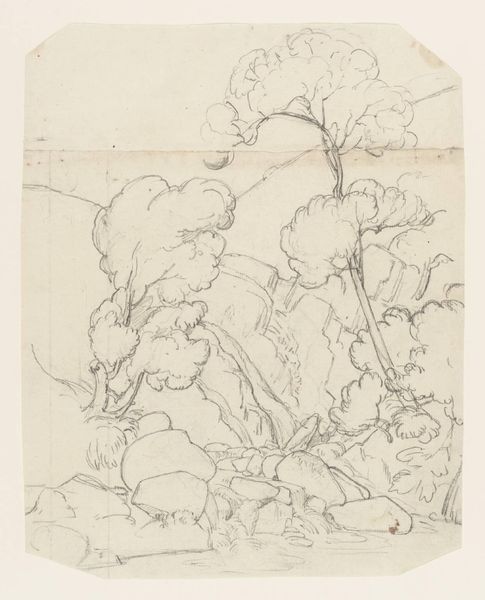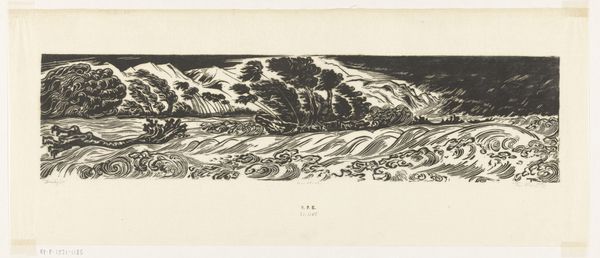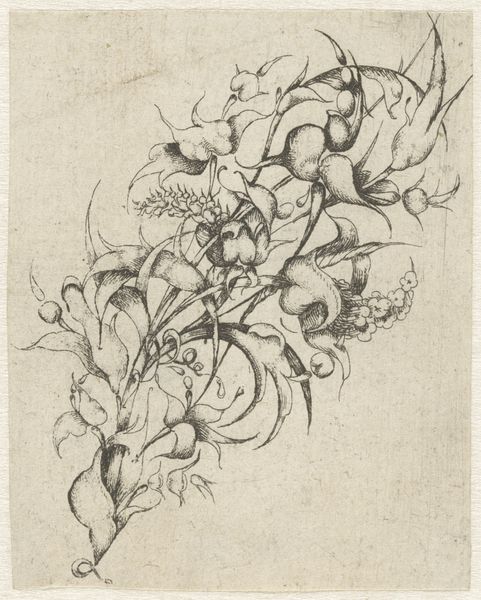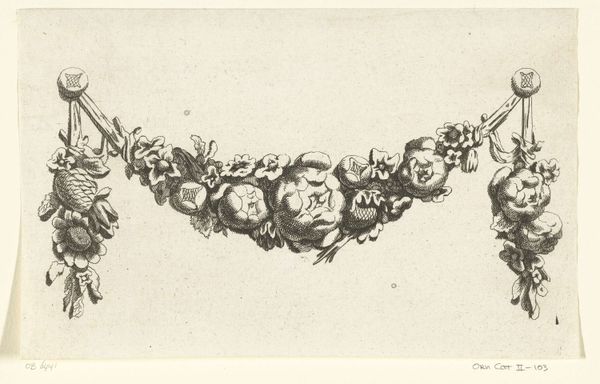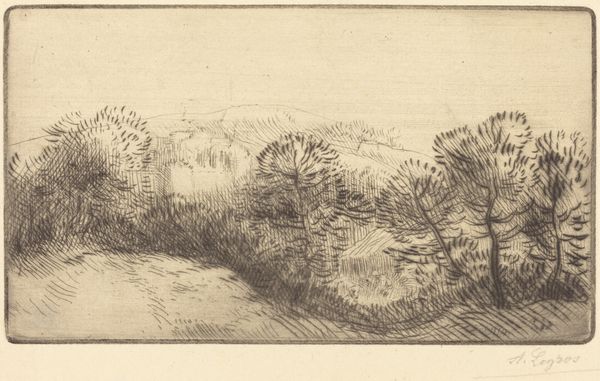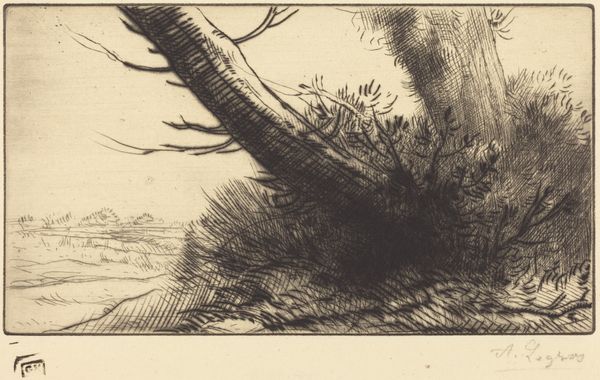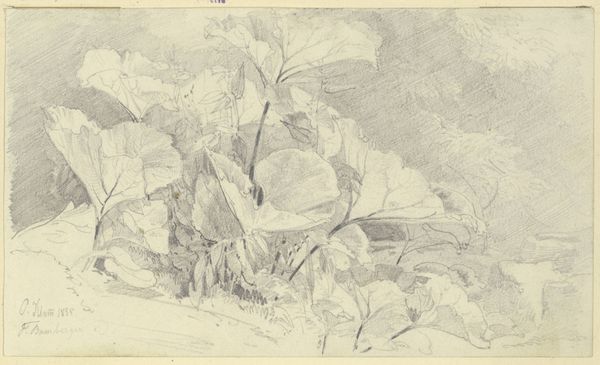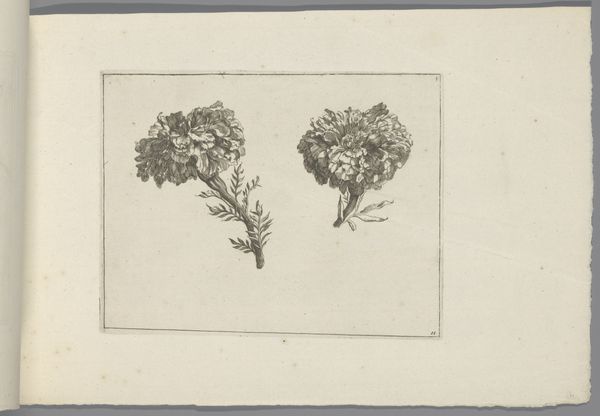
drawing, graphic-art, ink
#
drawing
#
graphic-art
#
art-nouveau
#
ink drawing
#
ink
#
plant
Dimensions: height 86 mm, width 260 mm
Copyright: Rijks Museum: Open Domain
Curator: Here we have "Koolblad (fragment)" an ink drawing made sometime between 1887 and 1924, by Julie de Graag. Editor: Oh, that's intriguing! It reminds me of looking into a very lush, slightly overgrown secret garden. The texture alone just pulls you in. Curator: Indeed. De Graag's technique focuses heavily on line and the contrast of dark and light to generate that pull. Consider the organic Art Nouveau curves juxtaposed with the bordering frame—a geometric element acting as a visual constraint. Editor: Yes, it is almost like containing wild, raw nature. And the choice to render the subject – what appears to be a fragment of a cabbage leaf – elevated like a prized bloom is interesting. Curator: The fragment highlights a broader stylistic commitment in the artist's works toward cropping. Decentering expectations of completion, and beckoning the eye to wander over meticulously captured textures. This subverts conventional composition through the extraction of the detail. Editor: It makes me wonder about the context. What was she trying to convey through something so simple? Curator: I believe de Graag explores nature's inherent structure and the delicate dance between the planned and uncontrolled within the botanical world. Her work seems to embrace a restrained yet palpable aestheticism. Editor: There's definitely a stillness, but a vibrancy, too. I’m still struck by the visual paradox; the bold black ink brings to mind woodcuts, while her rendering technique evokes the fragile detail of, say, an etching. Curator: The convergence of media techniques opens avenues for the work to echo between eras. The work’s graphic linearity is firmly footed in the advent of reproducible artworks as a domestic feature. Editor: It definitely makes you think. I walk away seeing beauty and complex arrangements in things I'd otherwise glance over. Curator: And there resides the strength of this image and this artist's broader work, to alter how one appreciates form beyond expectations and context.
Comments
No comments
Be the first to comment and join the conversation on the ultimate creative platform.


